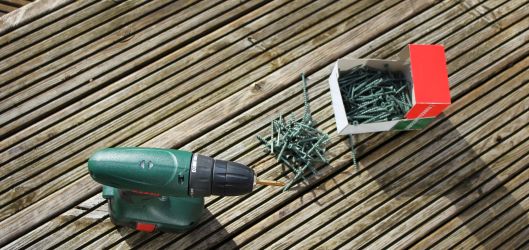
Online boomed in the lockdown, but how does that impact on the tools & fixings markets in the short to medium term? Will Jones, Chief Operating Officer of the
British Home Enhancement Trade Association (BHETA), provides his view…
ACBI survey, conducted between 26 May and 16 June, saw UK retailers reporting their strongest seasonal sales in more than four years in June, with online sales slowing as consumers rush back to the High Street. Alongside supermarkets, DIY shops, furniture, carpet and hardware stores led the way as the home improvement boom continues.
The easing of lockdown restrictions on shops, coupled with growing confidence in going out as the vaccination programme continues, fuelled the strongest sales since November 2016, with the rate of internet sales slowing to their weakest since last April. Since re‐opening in April 2021 total retail sales (including online) have boomed with April and May retail sales volumes combined 7.7% higher than in March, and 9.1% higher than in February 2020 before the impact of the Coronavirus pandemic yet footfall remains distinctly below the pre‐pandemic levels.
So, going forward, what does this mean in terms of the retail channels to back?
There is no doubt that UK online retail sales volumes have market maintained pace since bricks and mortar shops re‐opened on 12 April. Online retail sales reached a record proportion of total retail in January 2021 at 35.2% and dropped to 28.5% in May when shops reopened, but BHETA expects online to stay
between 25‐30% in 2021 and to slowly increase going forward. Prior to 12 April, shop footfall in the UK in 2021 was around ‐60% down year‐on‐year versus 2019.
Since shops have re‐opened footfall been around a third down. Looking at the latest available High Street footfall in the week commencing 26 June, there were 60% more shoppers visiting physical stores than in 2020, but 35% fewer than ‘normal’ in 2019, according to Springboard.
The CBI survey also revealed that while sales are expected to remain solid going forward, recovery remains “patchy” with city shopping not as strong as retail parks.
SO, WHAT DOES THIS MEAN FOR TOOLS & FIXINGS?
There are still many cautious customers out there who are still avoiding indoor venues so there is potential for shop footfall to increase as confidence returns, but that is unlikely to happen in large numbers through the summer and autumn as cases of the virus are expected to dramatically increase. BHETA expects online
to stay between 25‐30% in 2021, maybe decreasing slightly when Covid‐19 cases drop significantly and / or is not seen as a threat by the older, more‐traditional shopper.
We do have to remember that physical shops are still the dominant channel for retail sales overall, outstripping online by two to one in pounds terms, and remain vital. Particularly in categories where products have an aesthetic appeal, or are part of an assembly, where people prefer to see and touch the product before
purchasing. Good news for bricks and mortar tools and fixings.
In relevant markets, online shopping will never fully replace the experience of going into stores, browsing and seeking advice. It all depends on the category. Online sales are falling back – but only in some sectors. Figures from ecommerce specialist Salesfire, which collects data from 3,000 online retailers reflect the drop in online sales in some areas ‐ but not others. Tools and fixings suppliers and retailers need to understand how the tools and fixings end user shops the category. Looking at the market data and sector research has never been more important to understand which channels, retailers and online players are growing or shrinking. How is ‘direct to consumer’ received as a channel in this category? Which online marketplaces are performing well in tools and fixings and why? What is the demographic for bricks and mortar purchases?
The end user market is out there. House moves are still happening in good numbers ‐ 87,000 in April ‐ and house price growth was 8.9% over the last year, driving more home‐related projects. The lesson is to relearn where sales are to be had. Demand is there, omnichannel is likely to be a good shout, but do not neglect any kind of outlet because we are in a unique period of flux. The convenience of online shopping will continue and may outweigh the experiential aspect, particularly for everyday items that do not need to be seen in person. The volume of delivery choices from same day to next day delivery means customers can get
products quickly whilst still avoiding crowds. But there are many products and components best seen and experienced in person.
Ultimately, it is too soon to say how shopping patterns will change long‐term because of Covid‐19. It is likely that customers may well be more willing to buy online than they were before the pandemic, but technical products like tools and fixings need hands-on understanding. Online may be a significant part of the
future but bricks and mortar will always remain crucial.
For more information about BHETA and its market data, lobbying, networking, and business support opportunities, contact Helen Farnell in BHETA Member Services at hf@bheta.co.uk or 0121 237 1130.
This article originally appeared in Torque Magazine’s July-August 2021 issue. Read the whole magazine online or subscribe here.



